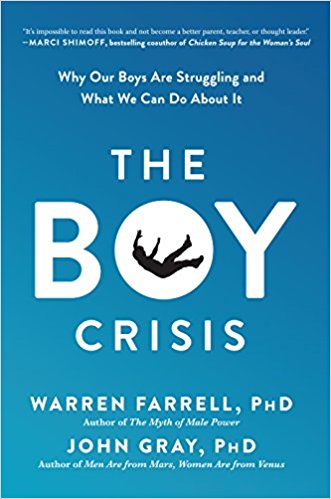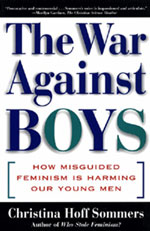![]()
Canada's largest daily newspaper
CT scans may harm children's intellect
Radiation questioned
New type may be safe
LOS ANGELES TIMES, JANE ALLEN, January 16, 2004, from the Toronto Star, page D2
A small child's fall or head injury can be very alarming, especially if the child loses consciousness. Sometimes a CT scan is needed to rule out a skull fracture or bleeding inside the brain.
But as reassuring as the high-tech answer may be, it could do harm in the long run. Researchers have found that low-dose radiation to the head before the age of 18 months can impair a child's intellect — and a CT scan uses high-dose radiation.
In a study of 3,094 men, Swedish scientists found that the greater their exposure to radiation as babies, the more impaired their eventual learning ability and logical reasoning. The researchers studied men who received low-dose radiation therapy to the head as children, and then looked at their schooling and test performance. Their findings suggest that radiation may damage children's developing brains, they say, and should be weighed by doctors considering CT scans for minor trauma.
Dr. Marvin D. Nelson Jr., a neuroradiologist and chief of radiology at Childrens Hospital Los Angeles, said the study raises important questions about the long-term effects of radiation.
But he pointed out that it should be followed up with a study that directly assesses the effects of CT radiation instead of the various types of radiation — beta rays, gamma rays, X-rays and radium-226 — with which the Swedish youngsters were treated.
In the study, which appeared in the Jan. 3 issue of the British Medical Journal, researchers at the Karolinska Institute in Stockholm assessed the intellectual capacity of men who as babies received low-dose radiation therapy for a venous malformation on the surface of the skin called a hemangioma.
The researchers found that the proportion of boys who attended high school decreased in relation to increasing doses of ionizing radiation to the front and back of the brain.
But Nelson said the types of radiation used then are different from today's CT, and that there are differences in the way various types of radiation are absorbed by the brain.
"If the child has significant head trauma as determined by the examining physician, I would not hesitate to do a CT," Nelson said. "The benefits far outweigh the risks."
CT is often used when a doctor suspects that a child has sustained a brain injury. The signs are unequal eye pupil size, lack of movement in the extremities and abnormal reflexes or unconsciousness for several minutes.
But it's not always required. If a child is knocked out briefly, he or she should be observed and usually won't need a CT scan, Nelson said.
TEDx Dr Warren Farrell
TEDx - The Boy Crisis: Why Our Boys Are Struggling and What We Can Do About It
One of the foremost speakers and thinkers on gender issues
It's a crisis of education. Worldwide, boys are 50 percent less likely than girls to meet basic proficiency in reading, math, and science.
It's a crisis of mental health. ADHD is on the rise. And as boys become young men, their suicide rates go from equal to girls to six times that of young women.
It's a crisis of fathering. Boys are growing up with less-involved fathers and are more likely to drop out of school, drink, do drugs, become delinquent, and end up in prison.
It's a crisis of purpose. Boys' old sense of purpose-being a warrior, a leader, or a sole breadwinner-are fading. Many bright boys are experiencing a "purpose void," feeling alienated, withdrawn, and addicted to immediate gratification.
So, what is The Boy Crisis? A comprehensive blueprint for what parents, teachers, and policymakers can do to help our sons become happier, healthier men, and fathers and leaders worthy of our respect.

Why boys are in trouble
Boys have been painted as the bad guys in the push to encourage girls to succeed, leaving many young men feeling confused and alienated, wondering what they did wrong
The Associated Press
January 5, 1999
According to psychologist and author William Pollack, 'sports are the one arena in which many of society's traditional strictures about masculinity are often loosened, allowing boys to experience parts of themselves they rarely experience elsewhere.'
When Harvard Medical School psychologist William Pollack administered a test to a group of 150 teenaged boys a few years ago, the results were shocking.

The Boy Crisis Book
The Boy Crisis: Why Our Boys Are Struggling and What We Can Do About It
Authors- Waren Farrell PhD and John Gray PhD
What is the boy crisis?
It's a crisis of education. Worldwide, boys are 50 percent less likely than girls to meet basic proficiency in reading, math, and science.
It's a crisis of mental health. ADHD is on the rise. And as boys become young men, their suicide rates go from equal to girls to six times that of young women.
It's a crisis of fathering. Boys are growing up with less-involved fathers and are more likely to drop out of school, drink, do drugs, become delinquent, and end up in prison.
It's a crisis of purpose. Boys' old sense of purpose-being a warrior, a leader, or a sole breadwinner-are fading. Many bright boys are experiencing a "purpose void," feeling alienated, withdrawn, and addicted to immediate gratification.
So, what is The Boy Crisis? A comprehensive blueprint for what parents, teachers, and policymakers can do to help our sons become happier, healthier men, and fathers and leaders worthy of our respect. Read More ..

Health Canada Publication
The Invisible Boy: Revisioning the Victimization of Male Children and Teens
"... the existence of a double standard in the care and treatment of male victims, and the invisibility and normalization of violence and abuse toward boys and young men in our society.
Despite the fact that over 300 books and articles on male victims have been published in the last 25 to 30 years, boys and teen males remain on the periphery of the discourse on child abuse.
Few workshops about males can be found at most child abuse conferences and there are no specialized training programs for clinicians. Male-centred assessment is all but non-existent and treatment programs are rare. If we are talking about adult males, the problem is even greater. A sad example of this was witnessed recently in Toronto. After a broadcast of The Boys of St. Vincent, a film about the abuse of boys in a church-run orphanage, the Kids' Help Phone received over 1,000 calls from distraught adult male survivors of childhood sexual abuse. It is tragic in a way no words can capture that these men had no place to turn to other than a children's crisis line."
American Psychological Association
Dating Violence Statistics in the United States
Nearly one in 10 girls and one in 20 boys say they have been raped or experienced some other form of abusive violence on a date, according to a study released Sunday at the annual meeting of the American Psychological Association.
![]()
The mean T-shirt: From the Stupid Factory
Todd Goldman says his popular boy-bashing T-shirts are simply funny.
So why are retailers having second thoughts? Read More ..

Why boys are in trouble
Boys have been painted as the bad guys in the push to encourage girls to succeed, leaving many young men feeling confused and alienated, wondering what they did wrong
The Associated Press
According to psychologist and author William Pollack, 'sports are the one arena in which many of society's traditional strictures about masculinity are often loosened, allowing boys to experience parts of themselves they rarely experience elsewhere.'
When Harvard Medical School psychologist William Pollack administered a test to a group of 150 teenaged boys a few years ago, the results were shocking.
![]()
Where the boys are
The Globe and Mail
February 1, 2003
Academically, boys across the country are lagging behind the girls, but a Montreal public school has seen dramatic improvement by separating the sexes in classes. It allows teachers to tailor curriculum and style to suit each sex. The result? The number going on to college has nearly doubled. INGRID PERITZ reports
MONTREAL -- The teenage girls at James Lyng High School like to flirt with boys. They like to tease them, joke with them, even date them sometimes. But attend class with them? As the giggling girls in one math class this week might say, "Gross."
Luckily, they don't have to. Coed James Lyng splits boys and girls up at the classroom door. The division of the sexes is credited with helping turn a faltering inner-city high school into an education success story.


